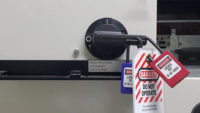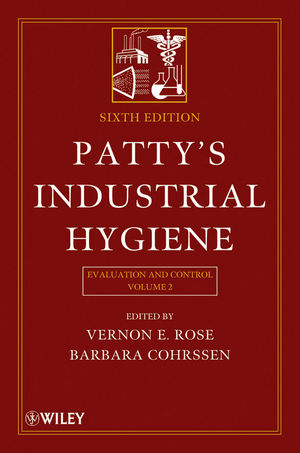Take control of hazardous energy

 What is hazardous energy?
What is hazardous energy?
According to OSHA, energy sources including electrical, mechanical, hydraulic, pneumatic, chemical, thermal or other sources in machines and equipment can be hazardous to workers. During the servicing and maintenance of machines and equipment, the unexpected startup or release of stored energy could cause injury to employees.
What are the harmful effects of hazardous energy?
Workers servicing or maintaining machines or equipment may be seriously injured or killed if hazardous energy is not properly controlled, according to OSHA. Injuries resulting from the failure to control hazardous energy during maintenance activities can be serious or fatal! Injuries may include electrocution, burns, crushing, cutting, lacerating, amputating, or fracturing body parts, and others.
- A steam valve is automatically turned on burning workers who are repairing a downstream connection in the piping.
- A jammed conveyor system suddenly releases crushing a worker who is trying to clear the jam.
- Internal wiring on a piece of factory equipment electrically shorts shocking employee who is repairing the equipment.
Craft workers, electricians, machine operators, and laborers are among the 3 million workers who service equipment routinely and face the greatest risk of injury, according to OSHA. Workers injured on the job from exposure to hazardous energy lose an average of 24 workdays for recuperation.
What can be done to control hazardous energy?
Failure to control hazardous energy accounts for nearly 10 percent of the serious accidents in many industries, according to OSHA. Proper lockout/tagout (LOTO) practices and procedures safeguard workers from the release of hazardous energy.
The OSHA standard for The Control of Hazardous Energy (Lockout/Tagout) (29 CFR 1910.147) for general industry outlines measures for controlling different types of hazardous energy. The LOTO standard establishes the employer's responsibility to protect workers from hazardous energy. Employers are also required to train each worker to ensure that they know, understand, and are able to follow the applicable provisions of the hazardous energy control procedures:
● Proper lockout/tagout (LOTO) practices and procedures safeguard workers from the release of hazardous energy. The OSHA standard for The Control of Hazardous Energy (Lockout/Tagout) (29 CFR 1910.147) for general industry, outlines specific action and procedures for addressing and controlling hazardous energy during servicing and maintenance of machines and equipment. Employers are also required to train each worker to ensure that they know, understand, and are able to follow the applicable provisions of the hazardous energy control procedures. Workers must be trained in the purpose and function of the energy control program and have the knowledge and skills required for the safe application, usage and removal of the energy control devices.
● All employees who work in the area where the energy control procedure(s) are utilized need to be instructed in the purpose and use of the energy control procedure(s) and about the prohibition against attempting to restart or reenergize machines or equipment that is locked or tagged out.
● All employees who are authorized to lockout machines or equipment and perform the service and maintenance operations need to be trained in recognition of applicable hazardous energy sources in the workplace, the type and magnitude of energy found in the workplace, and the means and methods of isolating and/or controlling the energy.
● Specific procedures and limitations relating to tagout systems where they are allowed.
● Retraining of all employees to maintain proficiency or introduce new or changed control methods.
The control of hazardous energy is also addressed in a number of other OSHA standards, including marine terminals (1917 Subpart C), longshoring (1918 Subpart G), construction (1926 Subparts Kand Q), electrical (1910 Subpart S), and electric power generation, transmission and distribution (1910 Subpart Rand 1926 Subpart V).
Why is controlling hazardous energy sources important?
Employees servicing or maintaining machines or equipment may be exposed to serious physical harm or death if hazardous energy is not properly controlled. Craft workers, machine operators, and laborers are among the 3 million workers who service equipment and face the greatest risk.
Compliance with the lockout/tagout standard prevents an estimated 120 fatalities and 50,000 injuries each year. Workers injured on the job from exposure to hazardous energy lose an average of 24 workdays for recuperation.
How can you protect workers?
According to OSHA, the lockout/tagout standard establishes the employer’s responsibility to protect employees from hazardous energy sources on machines and equipment during service and maintenance. The standard gives each employer the flexibility to develop an energy control program suited to the needs of the particular workplace and the types of machines and equipment being maintained or serviced. This is generally done by affixing the appropriate lockout or tagout devices to energy-isolating devices and by deenergizing machines and equipment. The standard outlines the steps required to do this.
What do employees need to know?
According to OSHA, employees need to be trained to ensure that they know, understand, and follow the applicable provisions of the hazardous energy control procedures. The training must cover at least three areas: aspects of the employer’s energy control program; elements of the energy control procedure relevant to the employee’s duties or assignment; and the various requirements of the OSHA standards related to lockout/tagout.
What must employers do to protect employees?
According to OSHA, the standards establish requirements that employers must follow when employees are exposed to hazardous energy while servicing and maintaining equipment and machinery. According to OSHA, some of the most critical requirements from these standards are outlined below:
● Develop, implement, and enforce an energy control program.
● Use lockout devices for equipment that can be locked out. Tagout devices may be used in lieu of lockout devices only if the tagout program provides employee protection equivalent to that provided through a lockout program.
● Ensure that new or overhauled equipment is capable of being locked out.
● Develop, implement, and enforce an effective tagout program if machines or equipment are not capable of being locked out.
● Develop, document, implement, and enforce energy control procedures. [See the note to 29 CFR 1910.147(c)(4)(i) for an exception to the documentation requirements.]
● Use only lockout/tagout devices authorized for the particular equipment or machinery and ensure that they are durable, standardized, and substantial.
● Ensure that lockout/tagout devices identify the individual users.
● Establish a policy that permits only the employee who applied a lockout/tagout device to remove it. [See 29 CFR 1910.147(e)(3) for exception.]
● Inspect energy control procedures at least annually.
● Provide effective training as mandated for all employees covered by the standard.
● Comply with the additional energy control provisions in OSHA standards when machines or equipment must be tested or repositioned, when outside contractors work at the site, in group lockout situations, and during shift or personnel changes.
Looking for a reprint of this article?
From high-res PDFs to custom plaques, order your copy today!









